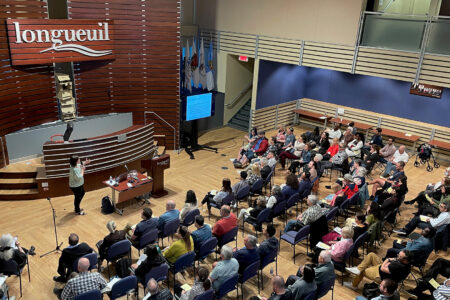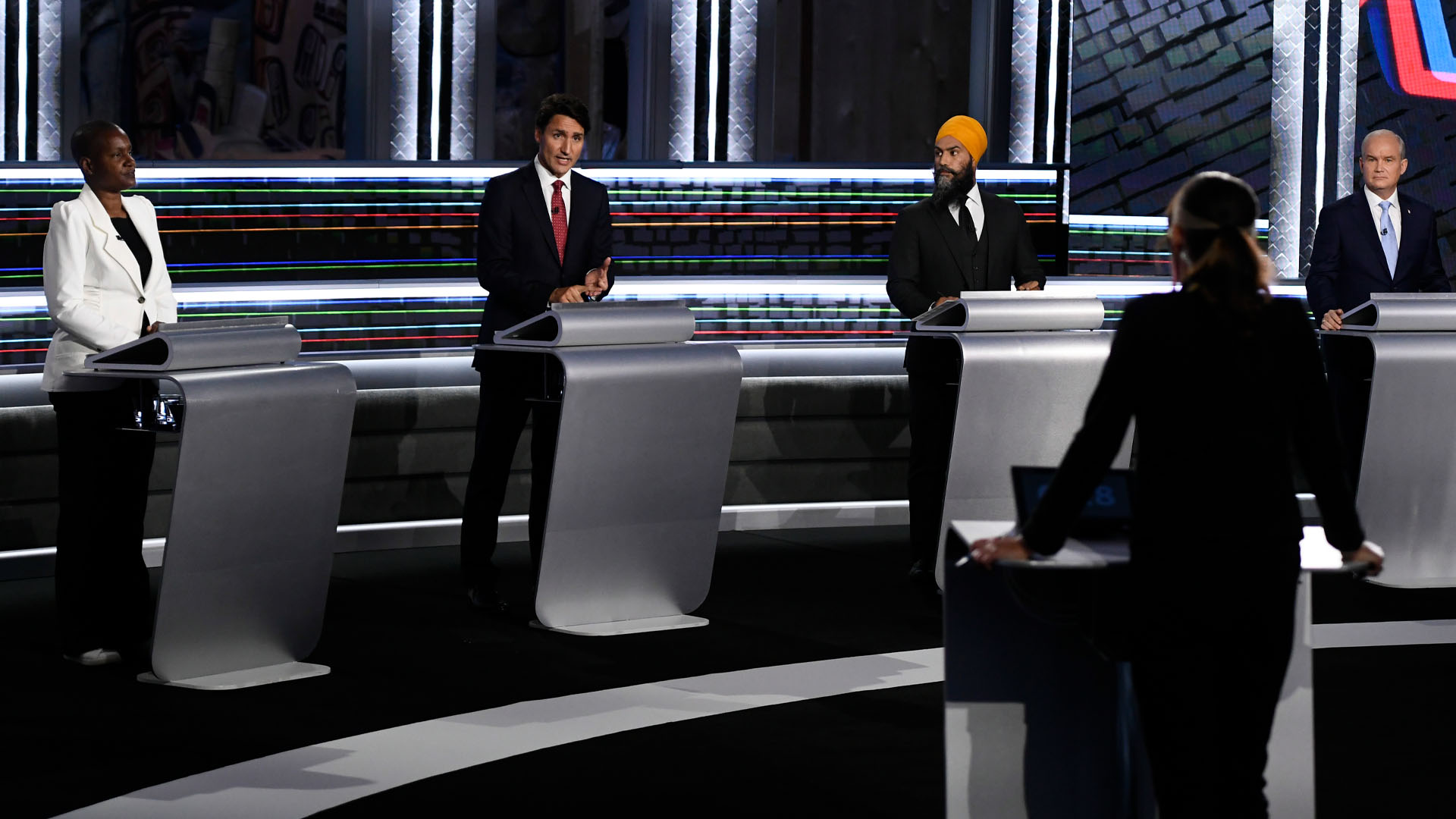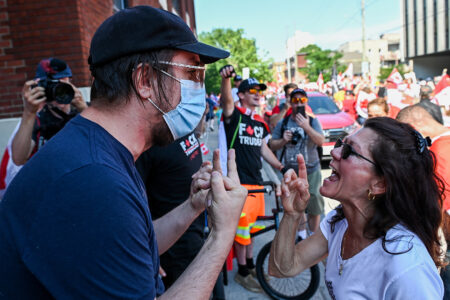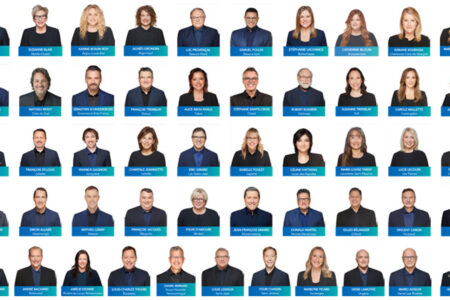
Leaders’ debates are key features of Canadian election campaigns, but recent editions with multiple people involved in exchanges were a mess. Too many moderators, journalists and citizens asking questions took up time and created unnecessary controversy. Overall, the setting was far from ideal for the leaders to provide simple factual information about their policies.
The main objective of the leaders’ debates should be to help the least-informed citizens learn some basic facts about the previous government, what the various parties promise to do if they form the next government, and the personal qualities and shortcomings of the leaders.
The best way to achieve these goals is to combine two formats: solo presentations by the leaders and a series of mini-debates between two of them at a time. We need the debates to be chaired by a neutral person who implements a precise timetable in which each leader is allowed to speak the same amount of time.
The leaders are fully capable of asking each other tough questions. The debates should provide them with the opportunity to tell us why we should vote for them (in solo presentations) and to contrast their views with those of their rivals (in mini-debates). Let’s give them the space they deserve to be heard by their fellow citizens.
After the 2015 election, when incumbent prime minister Stephen Harper did not participate in the official English debate organized by a media consortium (preferring to participate in several non-official debates organized by other news media organizations), the newly elected Trudeau government created a government agency to address the issue.
This situation led to the creation of the Leaders’ Debates Commission. As part of the commission’s preparation between the most recent two elections, we were invited to reflect on way the electoral debates have been conducted in Canada. The timeline of the election prevented publication of our full analysis. The way the debates were conducted during the 44th campaign on Sept. 20 underpins the relevance of following up on that important discussion.
Our reflection led to key principles and this proposal for how leaders’ debates should be conducted in future elections.
We assume that there are only two official debates, one in French and one in English, that there are five participants, that the total time that is devoted to each debate is two hours and that each debate is to be divided into four 30-minute sections, each section dealing with a theme. We also assume that the main goal is to help as many citizens as possible to cast a “correct” vote – that is a vote for the party and leader that best fits them if they were perfectly informed.
We have heard again and again pundits complaining at the end of a debate that they did not learn anything, that there was no new information. But the primary goal of a debate should be to enhance uninformed voters’ levels of knowledge about the parties and the leaders, not to make news for commentators.
This raises the question: what kind of information do voters need to cast a “correct” vote? We distinguish between three pieces of information: 1) the policies and decisions made by the governing party in its previous mandate; 2) the policy commitments made by the parties in this campaign; 3) the personal qualities of the party leaders.
We give priority to voters getting informed about the policy positions of the parties. But an election is not only about finding the party that is closest to our views about what governments should (and should not) do. Voters also wish to find out the personal qualities and shortcomings of the party leaders. So, it’s also about finding the person that we trust the most to become a good prime minister. Debates provide people who do not follow politics closely with useful information about whatever leaders’ personal characteristics they care about.
Format choices
At one extreme, we can have the five leaders engaged. At the other extreme, we can have one leader at a time, each successively presenting their views in solo, with no possibility of being interrupted by anyone. Instead, a mixture of solo-presentations and two-person debates is optimal.
Each 30-minute section dealing with a specific theme should be divided into two parts. First, the leaders each give two-minute solo presentations. Then, they engage in four-minute two-person debates between randomly selected pairs of leaders. Figure 1 below summarizes the proposed format.
All in all, 40 minutes are devoted to the leaders’ solo presentations (10 minutes per theme) and 80 minutes to mini-debates between two leaders (20 minutes per theme). Each leader would have 8 minutes (2 minutes per section) for solo presentations and would participate in 8 4-minute mini-debates with another leader (for a total of 32 minutes).
This entails two major changes from the existing format. First, all mini-debates are two-person debates. We believe that debates involving more than two persons provide less useful information to voters. Second, one-third of the time is devoted to the leaders’ solo presentations. On each theme, each leader has two minutes to make the case directly to voters. The leaders can highlight their past accomplishments or their main policy platform or they can criticize previous government decisions or one of their competitor’s promises.
This format does not solve all the problems. The leaders can use vague or vacuous slogans, they can dodge some issues, they can resort to their talking points, and they will certainly attempt to use the optimal communication strategy to please voters.
But solo presentations do have some advantages. They are much easier for the audience to follow and to understand what the person says. They are likely to contain less negative information than the two-person mini-debates, where the main objective of the participants is to show the shortcomings of the opponent.
Leaders will certainly make critical references to other leaders, but they will also have the unique opportunity to carry a positive message about themselves and their party for two minutes. Finally, voters are likely to learn more from the use of a hybrid approach that combines two formats, each with its own advantages and disadvantages.
Who presides?
There needs to be a person who chairs the debate, whose role is to make sure that the rules are respected by all the leaders. That person should be chosen by the commission, after consultation with the five parties. Their responsibility is to make sure that the time is allocated according to the format that has been agreed upon. That person should have no other responsibility.
Who starts a mini-debate?
On each theme, there are five four-minute mini-debates between two leaders. Who starts the conversation? There are three options: a journalist, an “ordinary” citizen, or one of the two leaders.
Journalists know the positions of the leaders on the various issues and the controversies dogging them and as a result are well-placed to ask tough questions. But choosing questions is a judgment call. Why should we let a few journalists define the agenda?
An alternative is to invite citizens to come up with their questions. But who selects citizens and their questions?
The third approach, which we propose, is to have one of the two leaders start with a question (we assume a short question, 30 seconds maximum). The leaders have an interest in focusing on their rivals’ perceived weaknesses, issues they attempt to avoid. This allows the conversation between the two leaders to start right away and gets rid of the problems associated with the selection of journalists or citizens.
There is no need to introduce new persons (journalists or citizens) to the stage. Having the leaders ask questions saves time and avoids controversies about journalists’ neutrality. The leaders have the same capacity and incentive as journalists to ask tough questions. There is ample opportunity for the media to exercise their gatekeeping role throughout the campaign.
A mixture of solo presentations and two-person debates (the mini-debates) is optimal. The leaders should get all the time to talk directly to voters without any interruption and to debate with just one other leader at a time, with no intervention from journalists or the public. Leaders’ debates should be centred around the leaders. The priority should be to let them tell us why we should vote for them.











